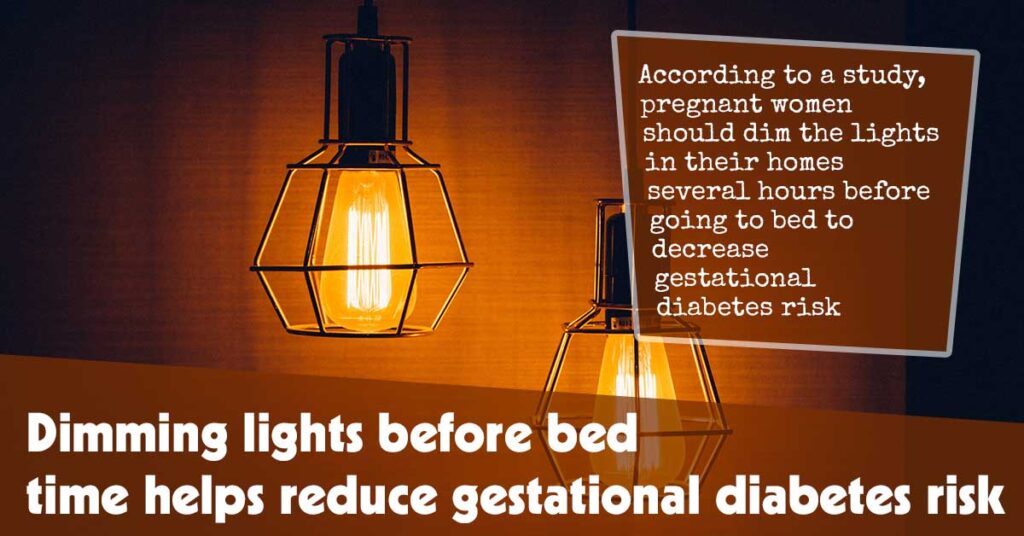Study results revealed that pregnant women could lower gestational diabetes risk by dimming the lights in their homes and switching off or at least dimming electronic device screens several hours before going to sleep, in order to cut down gestational diabetes risk.
Women participating in the study who developed gestational diabetes had elevated exposure to light three hours prior to sleep onset; their exposure levels in daytime or while sleeping and their activity levels did not vary compared with individuals who did not develop gestational diabetes.
Results show that exposure to light before going to bed could be an underestimated, yet easily modifiable gestational diabetes risk factor.
Evidence indicates that nightly exposure to light could be associated with reduced regulation of glucose in non-pregnant individuals. Unfortunately, very little is known about its effect during gestation on gestational diabetes risk – an issue often present during pregnancies with serious consequences for mother and infant alike.
Gestational Diabetes (GD) has been steadily on the rise both nationally and worldwide. Around 4.5% of women who had their first pregnancy from 2011-13 that gave birth experienced gestational diabetes, increasing by an average 3.4% every three years up until 2019; gestational diabetes represented 7.8% of all recorded births within the U.S. by 2020.
Gestational diabetes increases the risk of obstetric complications and may increase dementia, heart disease and diabetes for its mother; additionally, infants born of gestational diabetes face an increased chance of high blood pressure and obesity as they grow up.
Data show gestational diabetes increases one’s risk for type 2 diabetes by about 10 times compared to individuals without gestational glucose issues during gestation.
Exposure to bright light before bed can come from various sources such as home lighting or electronic devices such as smartphones, computers and TVs.
As soon as we wake up until going to bed, the potential risks of an extremely bright environment are often neglected. Dim lighting should be provided before bedtime; that much light likely isn’t required in the evening anyway.
Decreasing any light in the environment for at least three hours before bed is recommended. Avoiding phones and computers during this period would be ideal; if necessary, keep their screens dim by making use of night light options and switching off blue light settings.
Individuals at risk of gestational diabetes who had gestational diabetes during the previous pregnancy are at greater risk of gestational diabetes during subsequent pregnancies. Pre-sleep light exposure increases heart rate and could contribute to elevated blood pressure, insulin resistance and abdominal obesity.
Pre-sleep exposure to light could affect glucose metabolism by activating sympathetic overactivity, leading to an increase in heart rate just prior to sleeping when it should decrease – apparently activating fight or flight responses inappropriately when rest is needed.
Data suggests that sympathetic overactivity could contribute to cardiometabolic disease, an umbrella term for conditions including an imbalance of lipids, elevated blood pressure, insulin resistance and abdominal obesity which all culminate in cardiovascular disease.
Research with 741 women who were pregnant during their second trimester was carried out between 2011 and 2013. Their light exposure was monitored using a wrist-worn actigraph throughout this stage – during which most received gestational diabetes screening tests.
After accounting for daytime exposure to light, sleep regularity index, midpoint of sleep duration and season; employment schedule and commercial insurance; education level and race/ethnicity as well as BMI and age; pre-sleep exposure to light remained significantly linked with gestational diabetes.
Gestational Diabetes Risk has increased due to higher BMIs and older ages of pregnant women.

